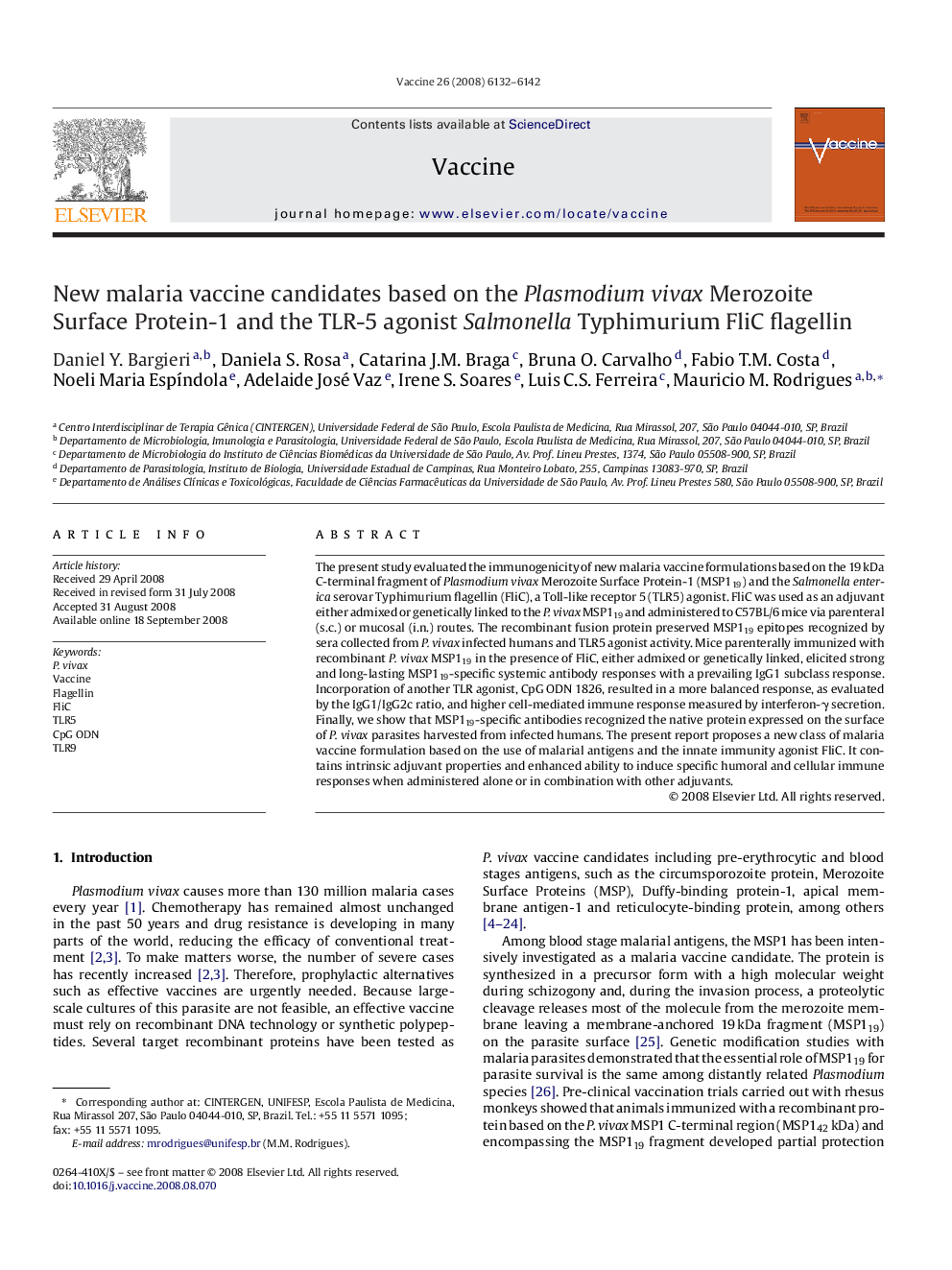| Article ID | Journal | Published Year | Pages | File Type |
|---|---|---|---|---|
| 10970445 | Vaccine | 2008 | 11 Pages |
Abstract
The present study evaluated the immunogenicity of new malaria vaccine formulations based on the 19 kDa C-terminal fragment of Plasmodium vivax Merozoite Surface Protein-1 (MSP119) and the Salmonella enterica serovar Typhimurium flagellin (FliC), a Toll-like receptor 5 (TLR5) agonist. FliC was used as an adjuvant either admixed or genetically linked to the P. vivax MSP119 and administered to C57BL/6 mice via parenteral (s.c.) or mucosal (i.n.) routes. The recombinant fusion protein preserved MSP119 epitopes recognized by sera collected from P. vivax infected humans and TLR5 agonist activity. Mice parenterally immunized with recombinant P. vivax MSP119 in the presence of FliC, either admixed or genetically linked, elicited strong and long-lasting MSP119-specific systemic antibody responses with a prevailing IgG1 subclass response. Incorporation of another TLR agonist, CpG ODN 1826, resulted in a more balanced response, as evaluated by the IgG1/IgG2c ratio, and higher cell-mediated immune response measured by interferon-γ secretion. Finally, we show that MSP119-specific antibodies recognized the native protein expressed on the surface of P. vivax parasites harvested from infected humans. The present report proposes a new class of malaria vaccine formulation based on the use of malarial antigens and the innate immunity agonist FliC. It contains intrinsic adjuvant properties and enhanced ability to induce specific humoral and cellular immune responses when administered alone or in combination with other adjuvants.
Related Topics
Life Sciences
Immunology and Microbiology
Immunology
Authors
Daniel Y. Bargieri, Daniela S. Rosa, Catarina J.M. Braga, Bruna O. Carvalho, Fabio T.M. Costa, Noeli Maria EspÃndola, Adelaide José Vaz, Irene S. Soares, Luis C.S. Ferreira, Mauricio M. Rodrigues,
